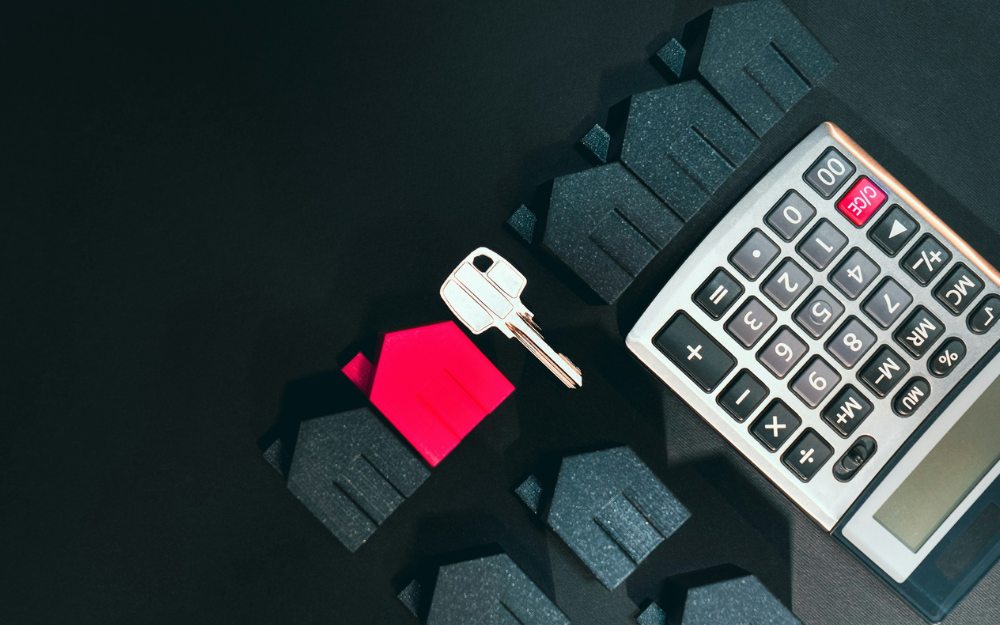Houses and units seem easier to understand than many other types of investments.
However, it’s important to understand how investing in property works, to decide if it’s right for you.

Pros and cons of investing in property
Property investment is often seen as being less risky than other forms of investment. However, while it may seem more straightforward, there are pitfalls to be aware of. Here’s what you need to consider about investing in property.
Pros
-
Less volatility – Property can be less volatile than shares or other investments.
-
Income – You earn rental income if the property is tenanted.
-
Capital growth – If your property increases in value, you will benefit from a capital gain when you sell.
-
Tax deductions – You can offset most property expenses against rental income, including interest on any loan used to buy the property.
-
Physical asset – You are investing in something you can see and touch.
-
No specialised knowledge required – Unlike some complex investments, you don’t need any particular specialised knowledge to invest in property.
Cons
-
Cost – Rental income may not cover your mortgage payments and other expenses.
-
Interest rates – A rise in interest rates will mean higher repayments and lower disposable income.
-
Vacancy – There may be times when you have to cover the costs yourself if you don’t have a tenant.
-
Inflexible – You can’t sell off a bedroom if you need to access some cash in a hurry.
-
Loss of value – If the property value goes down you could end up owing more than the property is worth.
-
High entry and exit costs – Expenses such as stamp duty, legal fees and real estate agent’s fees.
There are restrictions on buying property through a self-managed super fund (SMSF). See SMSFs and property for more information.
Diversify your investments
Invest in more than just property so your money isn’t all in one market. If you invest in one market, it’ll increase your risk and means your portfolio isn’t diversified. See choose your investments for how to find other investments to help you reach your goals.
Costs of investing in property
Buying, managing and selling an investment property can be costly and will affect your overall return.
Cost to buy and sell
Some of the costs involved to buy and sell a property include:
-
stamp duty
-
conveyancing fees
-
legal costs
-
search fees
-
pest and building reports
If you sell your property, you will have to pay agent’s fees, advertising costs and legal fees. You may also have to pay capital gains tax if the property has increased in value.
Borrowing money to buy
If you borrow to invest, you will have to pay the property mortgage. Don’t rely on rental income to cover the mortgage – there may be times when your property is empty.
Many people buy investment property with interest-only loans, but remember the interest-only period will end after a certain time. This means your repayments will increase to pay the amount borrowed, plus the interest. See interest-only home loans to find out how they work.
Interest-only mortgage calculator
See what an interest-only loan will cost you.
Costs to own an investment property
Ongoing costs of investment properties include:
-
council and water rates
-
building insurance
-
landlord insurance
-
body corporate fees
-
land tax
-
property management fees (if you use an agent)
-
repairs and maintenance costs
Tax on your investment property
Although you may be able to claim tax deductions on expenses, you’ll still have to pay them up front. For positively geared investments, you may pay tax on your rental income.
Visit the Australian Taxation Office (ATO) for how tax works for investment properties.
What to consider when buying an investment property
Once you have a property in mind, compare the income you expect to your outgoing expenses. If there is a shortfall, consider whether you can cover it long-term. Also, work out whether you could cover all expenses short-term if you had no tenants for a while.
Research the property market to decide how to get an investment property. Where and what you buy will affect your return on investment.
Where to buy
-
Areas you’re familiar with will take time to research.
-
Look for areas with high growth, higher rental yield and low vacancy rates.
-
Find out about proposed planning changes in the suburb that may affect future property prices.
What to buy
-
Look for properties with appealing features like a second bathroom, a garage and access to schools, shops and transport.
-
Consider maintenance costs based on property type, age and features.
How to buy
-
Be wary of property investment advice from groups of service providers. Property developers, accountants, lawyers and mortgage brokers might recommend each other’s services.
You may have heard of property investment seminars promising to make you a fortune. These events often use high-pressure sales tactics to rush you into making big property investment decisions. Find out how to spot the warning signs of a dodgy investment seminar.
Overseas property investment
Investing in overseas property is more risky than investing in property in Australia. It’s harder to manage a property from afar and there may be costs that you haven’t thought of.
Here are some things to consider before you invest:
-
Distance – Good tenants and property managers are hard to manage when you’re so far away
-
Renovations and repairs – You can’t supervise repairs or know who does the work
-
Extra costs – You must factor in Australian tax laws, local property taxes, insurance, management costs, and ongoing repairs. If you buy through a promoter, there may be other hidden costs
-
Exchange rate – Changes could affect the amount of income you receive
Case Study
Simon and Tiana consider an investment property
Simon and Tiana are considering buying an investment property. They spot a unit that ticks all of their boxes: it’s close to a train station and is a 10 minute walk to restaurants and shops.
The property price is $550,000 with buying costs of $23,000. They have a deposit of $150,000 so they will need to borrow $423,000 to complete the purchase. Their monthly income and expenses are expected to be:
|
Income and expenses |
$ |
|
Rental income |
$2,250 |
|
Less loan repayment |
-$2,725 |
|
Less allowance for expenses |
-$225 |
|
Less strata fees |
-$216 |
|
Less allowance for repairs and maintenance |
-$500 |
|
Monthly shortfall |
-$1,416 |
Simon and Tiana can cover the monthly shortfall with Tiana’s salary, which they currently save. They also have an emergency fund they can draw on if they were suddenly without tenants for a while.
Please contact us on 03 9993 9063 if you seek further assistance on this topic.
Source : Moneysmart.gov.au January 2021
Reproduced with the permission of ASIC’s MoneySmart Team. This article was originally published at https://moneysmart.gov.au/property-investment
Important note: This provides general information and hasn’t taken your circumstances into account. It’s important to consider your particular circumstances before deciding what’s right for you. Although the information is from sources considered reliable, we do not guarantee that it is accurate or complete. You should not rely upon it and should seek qualified advice before making any investment decision. Except where liability under any statute cannot be excluded, we do not accept any liability (whether under contract, tort or otherwise) for any resulting loss or damage of the reader or any other person. Past performance is not a reliable guide to future returns.
Important Any information provided by the author detailed above is separate and external to our business and our Licensee. Neither our business nor our Licensee takes any responsibility for any action or any service provided by the author. Any links have been provided with permission for information purposes only and will take you to external websites, which are not connected to our company in any way. Note: Our company does not endorse and is not responsible for the accuracy of the contents/information contained within the linked site(s) accessible from this page.





